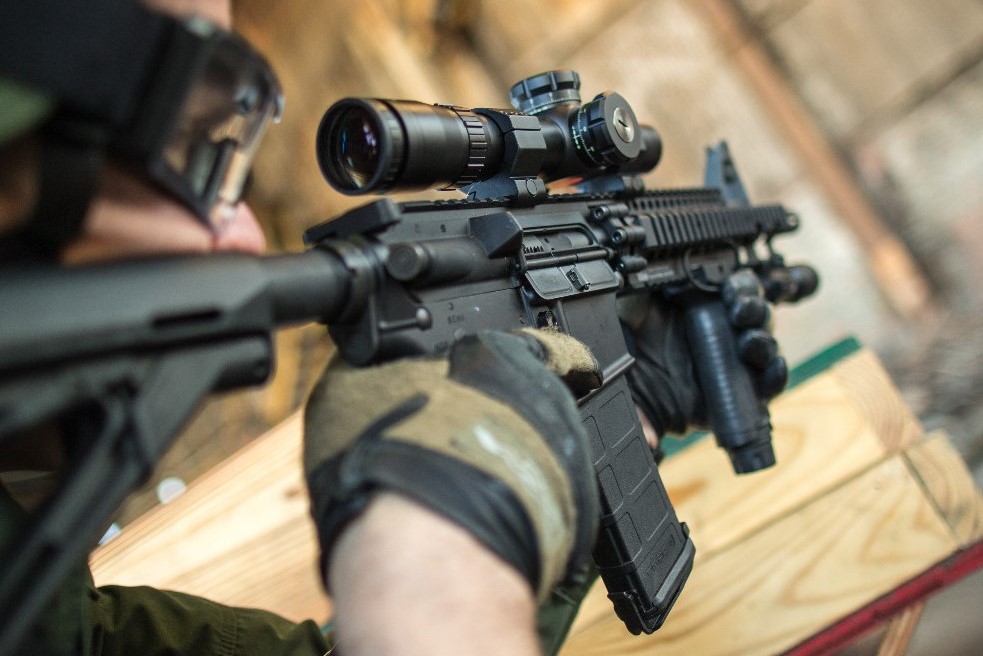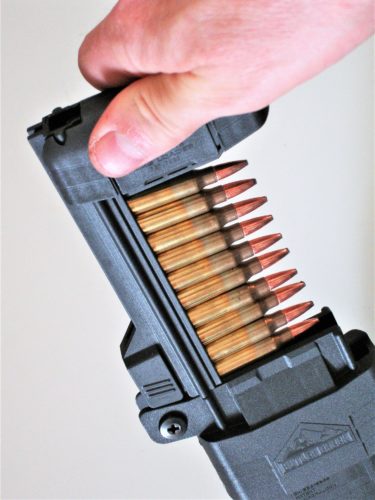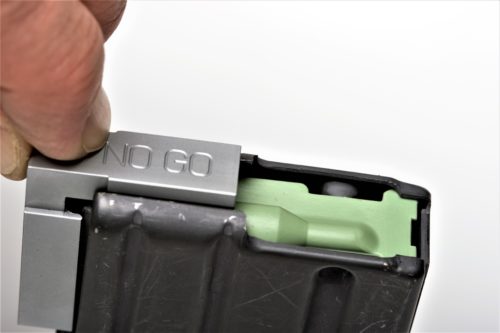The magazine is as critical as the ammo we use. It’s a critical component in any semi-automatic or automatic magazine-fed weapon. A large percentage of weapon malfunctions can be attributed to magazine-related issues. This being the case, it is surprising how little attention is paid to this critical component.
The first AR-15/M16 magazines were designed to be single use disposable items. The US military soon decided that this wasn’t optimal and the magazines were re-designed to allow easier disassembly for cleaning and maintenance.
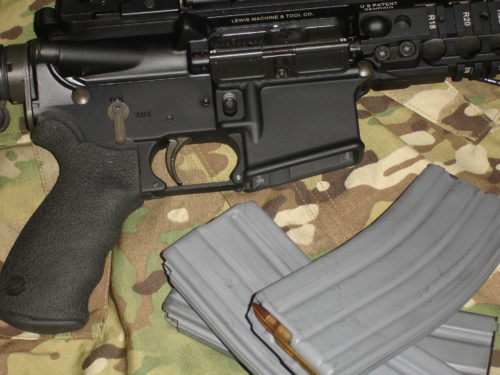
Cleaning and maintaining your magazines is just as important as cleaning and maintaining your rifle or selecting the right ammunition. If you get a magazine malfunction, test it again. If it creates a second malfunction, immediately take it out of duty until the problem can be ascertained and remedied or use the magazine for training purposes only. The best option, of course, is to simply get a new magazine. Lives depend on it.
Failures to feed are commonly caused by a weak magazine spring or a bound follower. The use of self-leveling/anti-tilt followers helps resolve follower issues, as will keeping your magazines clean.
USGI magazines with the old black USGI followers shouldn’t be used for duty. The US military has taken them out of service. The military considers the green USGI followers to be strong performers and acceptable as long as they are serviceable.
The blue EPM USGI followers, tan USGI followers and Magpul Enhanced Self-Leveling followers feature a non-tilt follower and are considered optimal. Followers are easily replaced and are available from suppliers such as Brownells.
It is important to emphasize that the above comments on black USGI followers don’t apply to the proprietary patent-pending black followers employed in SureFire® High-Capacity Magazines. SureFire followers are totally different from the followers used in USGI 30-round magazines.
Fatigued springs need to be replaced to make a magazine serviceable. Chrome silicon (CS) springs will provide longer duty-cycle life than stainless-steel (SS) springs.
Correction could be as simple as replacing the blue colored spring with the black one, cleaning the shellac or polymer deposited from all those cheap steel shell cases or replacement of the ejector spring in rare cases. Most often proper cleaning will remedy the extraction ejection issues though.
There are a number of other conditions that can cause short stroking and the same type of jam. Poor gas pressure or short duration may allow the bolt to extract and eject a fired case but the bolt doesn’t travel back far enough to pick up the rear of the case head. This is evident when the fired case just barely clears the ejection port and the fresh case has an indent in the case body and the bullet nose is partially forward of the front edge of the magazine or may even be pushed into the feed ramp slightly.
Correction for this could be replacement gas rings, replacement of the adjustable gas block/adjustable gas tube. Fired cases should eject forcefully from the ejection port and thoroughly irritate the shooter in the next position to the right, (left for a properly built left hand AR).
A true double feed occurs only when one feed lip is bent up on the right or left side and will occur every other round. This is fairly easy to detect and correct by simply noting which side the next round is positioned and whether or not a jam occurs after the first or second shot from the bent side.
If you fail to fully chamber a round and then put another one on top of the round, you just screwed up. This can be done when press checking is poorly trained and they are instructed to partially extract a live round to see if one is chambered and then the bolt/bolt carrier isn’t fully seated again.
If both feed lips are bent up it will most often occur with each shot and both will need adjustment. This condition exists in poorly or non-heat treated aluminum and most steel magazines because the manufacturers rely on the inherent strength of the steel rather than using higher carbon content. Checking feed lips for dents, dings, cracks or damage is easy enough but also neglected often.
Magazines should be routinely examined for wear or damage. One common test is to half load a magazine (15 rounds in 30 round magazine) and smack the base on hard surface to see if a round pops out in order to determine if the feed lips are spread and/or the magazine spring is weak. This is not a good test as all magazines will release tension on the top rounds allowing one or rounds to pop out when tested in this manner.
Cracked feed lips can easily occur if a fully-loaded polymer magazine is dropped from weapon height onto a hard and has the misfortune of landing on the feed lips. Your not out of the woods with aluminum USGI magazines. The feed lips on USGI aluminum magazines may not crack but will bend under similar circumstances.
The US Army at Picatinny Arsenal in New Jersey has developed and patented (US Patent No. 7117626) a go/no feed lip gauge that allows anyone to quickly and accurately check for the correct maximum and minimum clearance tolerances of a magazine’s feed lips. Specs magazine feed lips clearance are Go: 454″ No-Go: 476″. Try to gauge that visually with any degree of accuracy without a tool such as a Go/No-Go gauge — you cannot! Using a go/no go gauge eliminates all guesswork.
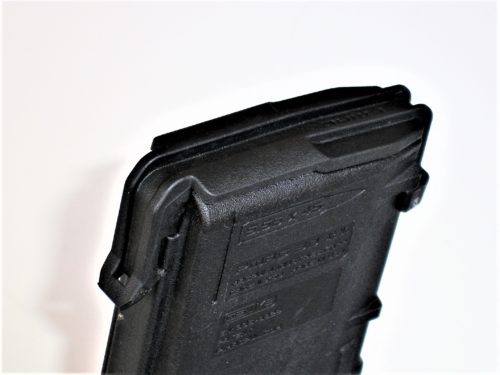
The Army feed lip gauge has been licensed for manufacture and is now available from Brownells. The Brownells AR-15/M16 Feed Lip Gauge (080-000-744WB) is easy to use. It may be used on any STANAG-compliant magazine, whether metal or polymer. It should be noted that Magpul® PMAG® dust covers double as a go/no-go gauge for PMAGs.
To use the Brownells Feed Lip Gauge you either dissemble the magazine and remove the follower and spring or push the follower away from the feed lip. You slip the gauge over the magazine from the top and lightly press the gauge between the magazine feed lips. Use care not to apply pressure to the sides of the magazine while testing. If the gauge passes completely through the feed lips, the gap is too wide. If the gauge won’t pass at all through the feed lips, the gap is too narrow.
If the feed lips are out of spec, either discard the magazine or, in the case of aluminum magazines, use Brownells Magazine Feed Lip Tool (080-000-314WB), which is available separately, to bend the lips back into spec. Trying to do this with pliers can easily result in un-repairable damage to the magazine.
Brownells Feed Lip Tool features a machined, blued steel shank that has a bevel cut and slot. It hooks on the feed lip and keeps it supported while bringing the it back into proper tolerances. The Feed Lip Tool will help get extra life out of otherwise unserviceable magazines. Feed lips can develop cracks fairly easily, so proceed carefully. Magazines with reconditioned feed lips be clearly marked and consigned to training/range use only. I mark mine with a big “T”. There will be metal fatigue in bent feed lips. Never use them for duty.
The use of a magazine loading / unloading tool will not only save time and your thumb but more importantly will eliminate stress and wear to the feed lips from loading and unloading magazines, lengthening the service life of the magazine. There are a number of excellent loaders on the market. You can also use the standard USGI stripper clip guide.
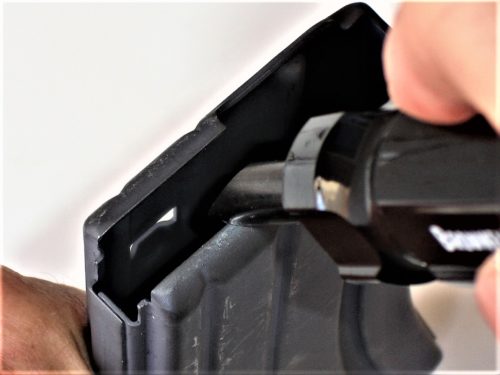
Magpul Enhanced Self-Levelling followers are a drop-in replacement for the USGI black or green followers. They are available separately in 3-packs in your choice of green or yellow. USGI magazines with tan followers employ a proprietary spring that attaches in the middle of the follower and cannot be used with standard springs.
Magazines will need to be periodically disassembled for cleaning and further inspection. Don’t overdo this. Disassembly should be done only as necessary. Routine disassembly will cause unnecessary wear. Magazines don’t need to be cleaned after every range session. After a high amount of shooting or exposure to the elements or dirt and dust, cleaning is called for. Disassembly of the USGI aluminum magazines is a simple procedure, but doing it improperly can damage the magazine.
The stamped floor-plate on USGI magazines needs to be removed. There are several ways to do this. You can either slide a flat screwdriver beneath the tab front edge of the floor-plate and the magazine body and pry the floor-plate forward or insert a cleaning rod, small punch or tip of a cartridge into the drain hole on the floor-plate and flex the floor-plate slightly downward and forward. Do NOT pry the floor-plate tabs off the bottom as they will break. Slide the floor-plate off and work the spring out and follower of the bottom . The follower may take a little effort to remove.
With the spring and follower removed, run a a dry cloth through the magazine body several times. You can use a toothbrush to scrub inside the inside of the body or a purpose designed mag brush.
The spring and follower should be carefully examined for signs of wear or damage. All magazine springs will fatigue over time. Compare the spring to a new spring or spring that’s known to be good. If the old spring shows signs of fatigue, that is it is noticeably shorter, it’s time to replace it or discard the magazine. Pay particular attention to any signs of chipping or cracking of the follower. Any loose chips in the magazine body are a sure indicator of follower damage.

If a magazine has worn or damaged parts, either discard the magazine or replace the parts and use the magazine exclusively for training. Training only magazines must be clearly marked to prevent them from being mistaken for a training magazine.
Do not lubricate or leave any oils or lubrication inside the magazine or its components. Not only is it unnecessary, it will become a dirt magnet. I just wipe them down with a silicone cloth,
Reassembly is in reverse order, just remember to insert the spring in any hole provided in the follower to ensure proper travel and pressure. After re-assembly test the magazine by loading a dummy round and making certain that it feeds properly and the bolt locks back. Better yet, take the magazine to the range and test it with a little range practice. One can never get too much range practice!
There are numerous polymer magazines for the AR-15/M16 on the market. Disassembly methods will vary , but most are designed for easy disassembly and cleaning. In general, they require less cleaning and maintenance than aluminum USGI magazines. Disassembly and maintenance of a SureFire High-Capacity Magazine (HCM) is similar to conventional USGI aluminum magazines.
Drum magazines are complex and generally difficult to take apart and clean in the field. Many require special powder lubricants and are not designed to remain loaded for long periods The excellent Magpul PMAG D60® s an exception.
Mark all of your magazines with your initials or a unit number along with an individual magazine identifier so that you can tell them apart. Don’t get too attached to your magazines. AR Mags are disposable. Your life and the lives of others are worth more than the price of a new magazine. Don’t ever forget that.
*The views and opinions expressed on this website are solely those of the original authors and contributors. These views and opinions do not necessarily represent those of Spotter Up Magazine, the administrative staff, and/or any/all contributors to this site.
срочный займ на карту без отказа

